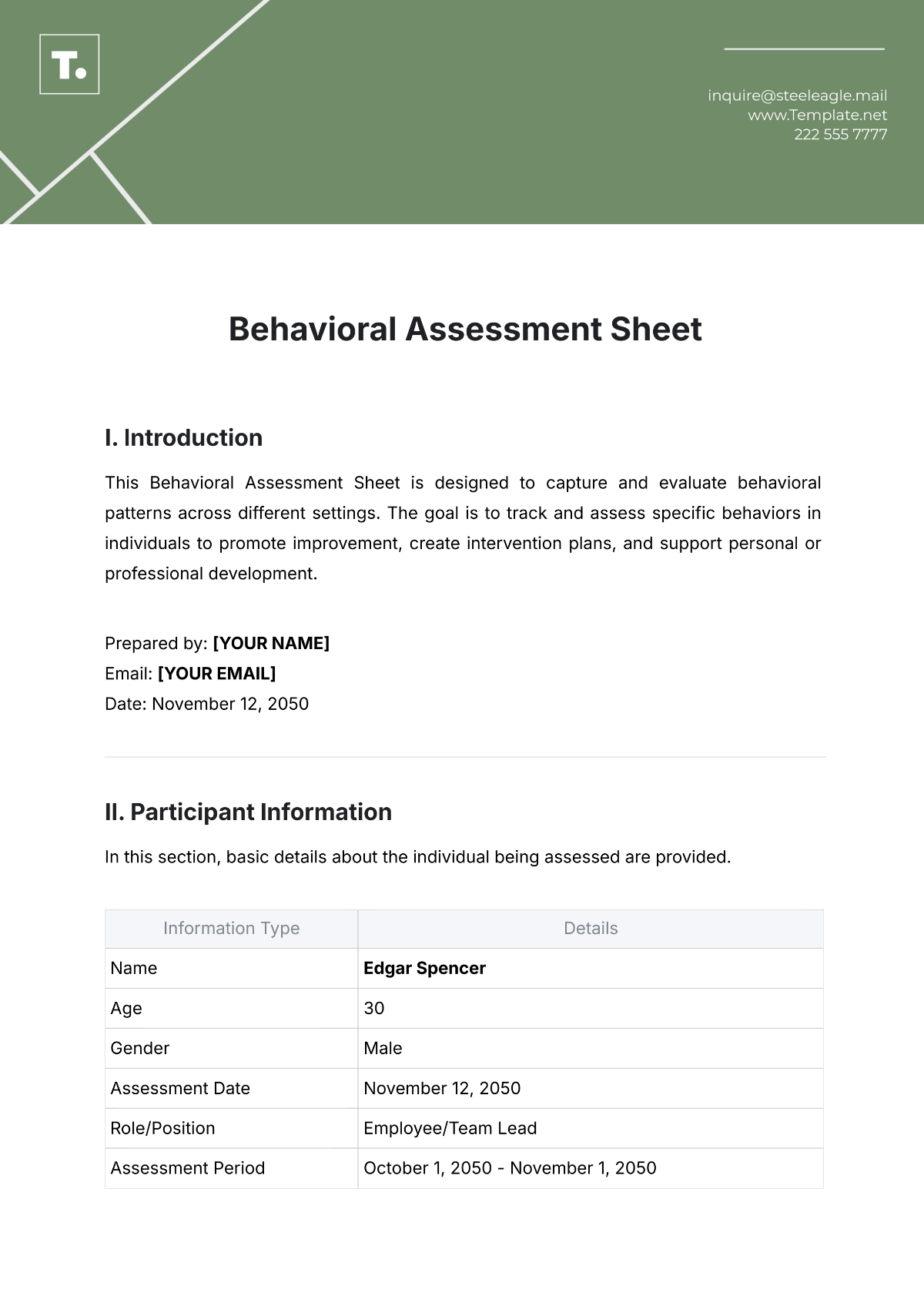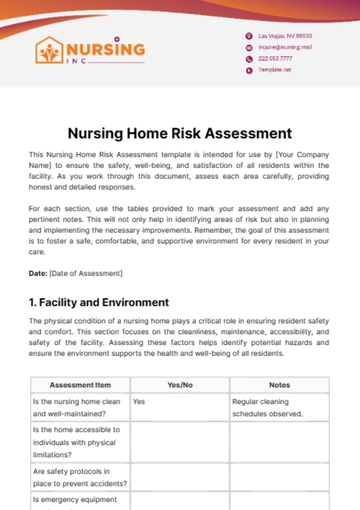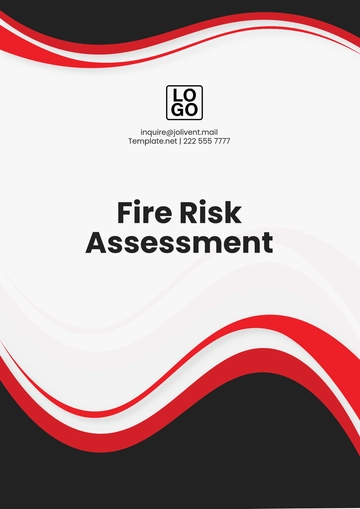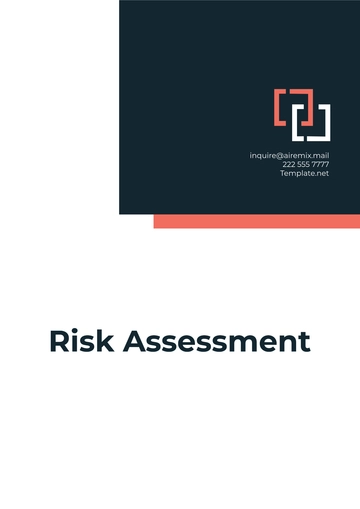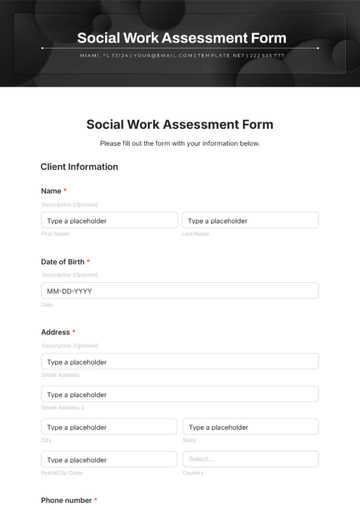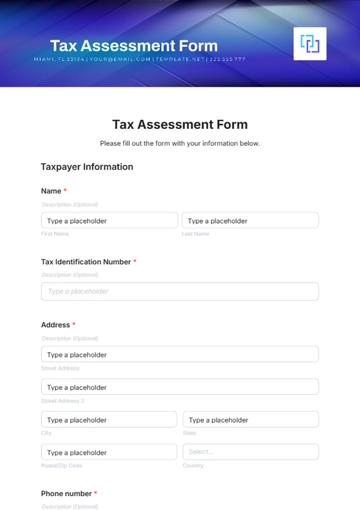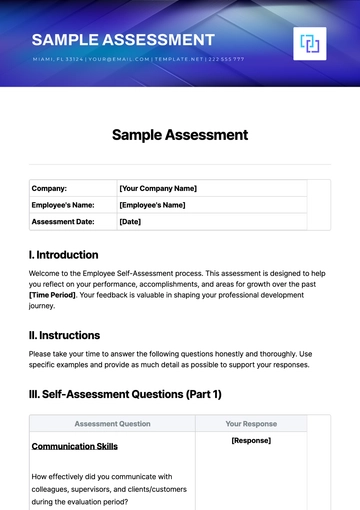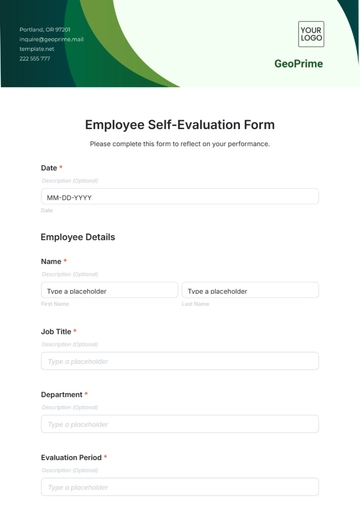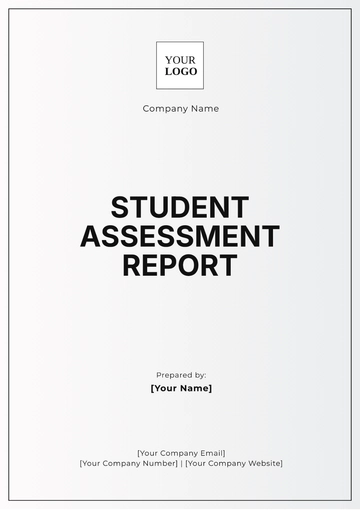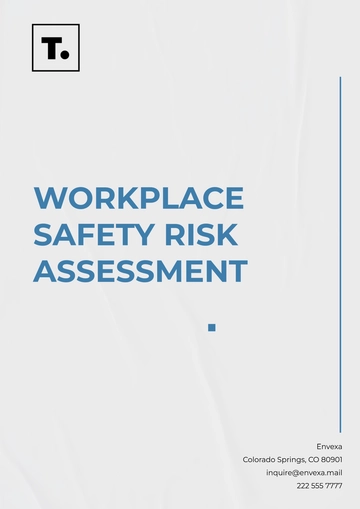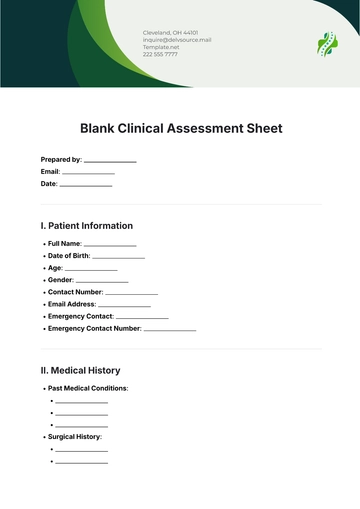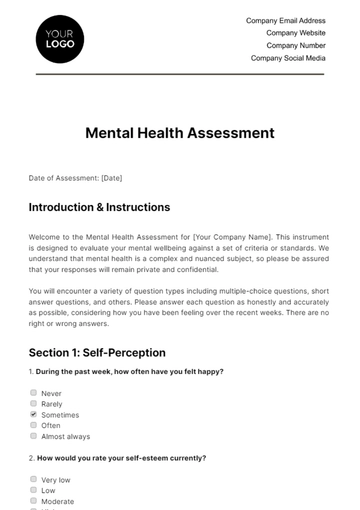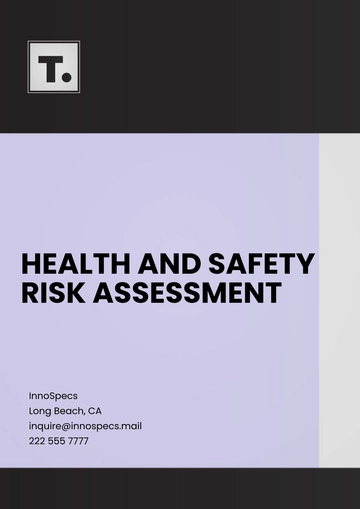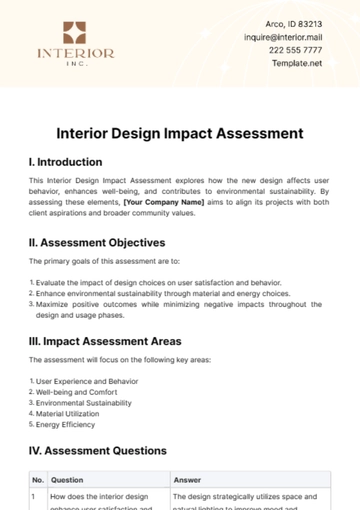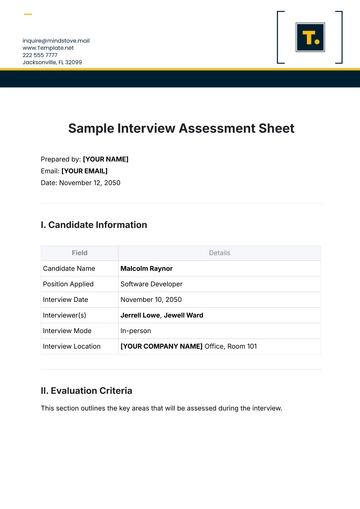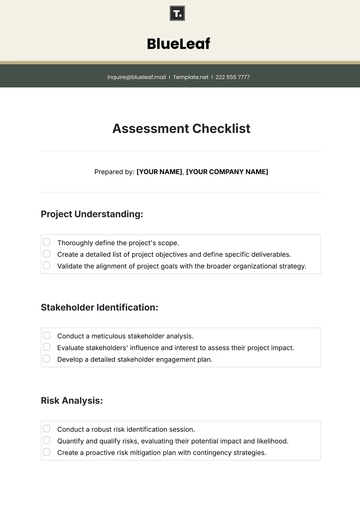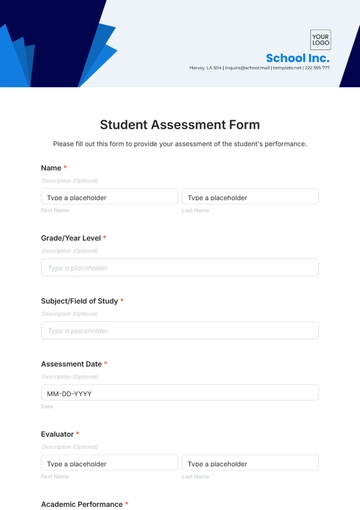Behavioral Assessment Sheet
I. Introduction
This Behavioral Assessment Sheet is designed to capture and evaluate behavioral patterns across different settings. The goal is to track and assess specific behaviors in individuals to promote improvement, create intervention plans, and support personal or professional development.
Prepared by: [YOUR NAME]
Email: [YOUR EMAIL]
Date: November 12, 2050
II. Participant Information
In this section, basic details about the individual being assessed are provided.
Information Type | Details |
|---|
Name | Edgar Spencer |
Age | 30 |
Gender | Male |
Assessment Date | November 12, 2050 |
Role/Position | Employee/Team Lead |
Assessment Period | October 1, 2050 - November 1, 2050 |
III. Behavioral Observations
This section includes key behaviors observed during the assessment period. It covers both positive and areas requiring improvement.
Behavior | Description | Frequency | Severity | Notes |
|---|
Communication | Actively participates in team discussions and listens to others. | Daily | Moderate | Improvement noted since last month. |
Team Collaboration | Collaborates well with others but occasionally dominates talks. | Weekly | High | Needs to allow others more speaking time. |
Emotional Regulation | Maintains composure under pressure. | Often | Low | Rarely shows signs of stress. |
Problem Solving | Quickly identifies issues and offers solutions. | Daily | Moderate | Great improvement in approach. |
IV. Work Environment Interactions
This section assesses the individual’s behavior in their work environment, especially interactions with peers, supervisors, and subordinates.
Interaction Type | Description | Observed Frequency | Notes |
|---|
Peer Interaction | Shares constructive feedback with peers. | Daily | Positive impact on team morale. |
Supervisor Interaction | Responds promptly to supervisor requests and feedback. | Weekly | Shows improvement in accepting feedback. |
Conflict Handling | Resolves minor disagreements without escalation. | Occasionally | Needs to be more proactive in conflict resolution. |
V. Behavioral Strengths
Here, we focus on the individual’s key strengths observed during the assessment period.
Leadership Skills: Exhibits strong leadership abilities when guiding the team.
Communication: Clear and concise communicator during meetings.
Adaptability: Able to adjust to changes in work processes and expectations.
Time Management: Efficiently completes tasks ahead of deadlines.
VI. Areas for Improvement
In this section, key areas requiring improvement are identified for further development.
Conflict Resolution: Needs to enhance approach to resolving team conflicts without delay.
Team Inclusivity: Should work on ensuring all team members have equal opportunities to contribute in meetings.
Delegation: At times, tends to overtake tasks instead of delegating appropriately.
VII. Behavioral Development Plan
This section outlines the development plan to address the identified areas for improvement. It includes specific goals, actions, and a timeline.
Goal/Action | Timeline | Responsible Party | Outcome Measurement |
|---|
Encourage team inclusivity through training. | November 15, 2050 | [YOUR COMPANY NAME] | Team feedback and observation at next meeting. |
Attend conflict resolution workshop. | December 1, 2050 | Edgar Spencer | Decrease in unresolved team conflicts. |
Practice delegation by assigning tasks more evenly. | November 20, 2050 | Edgar Spencer | Monitor workload distribution in future projects. |
VIII. Conclusion
This behavioral assessment provides a clear snapshot of the individual’s performance, highlighting strengths and areas where further development is needed. By following the outlined behavioral development plan, continuous improvement can be achieved.
Sheet Templates @ Template.net
